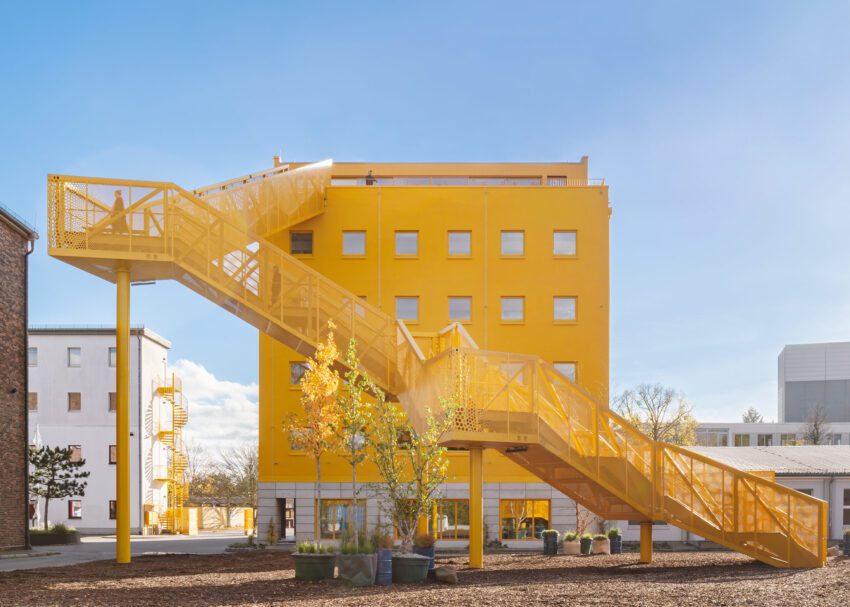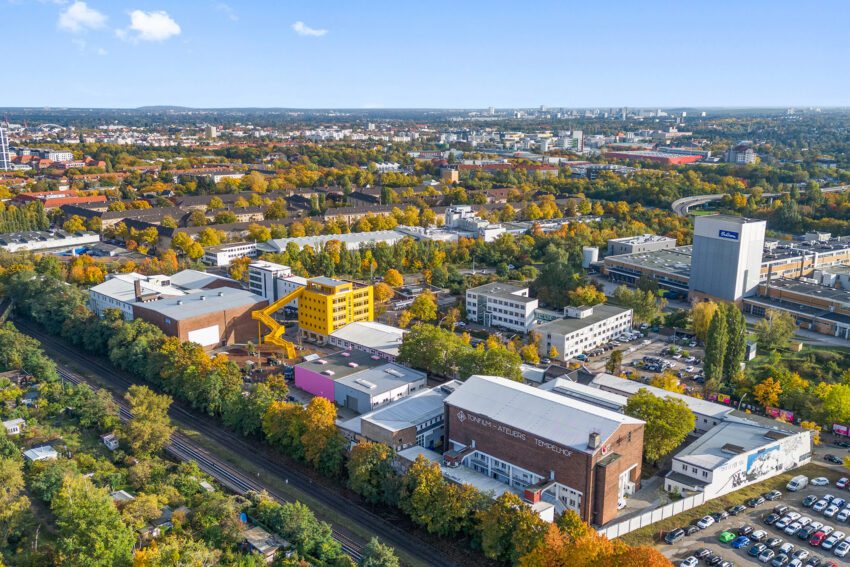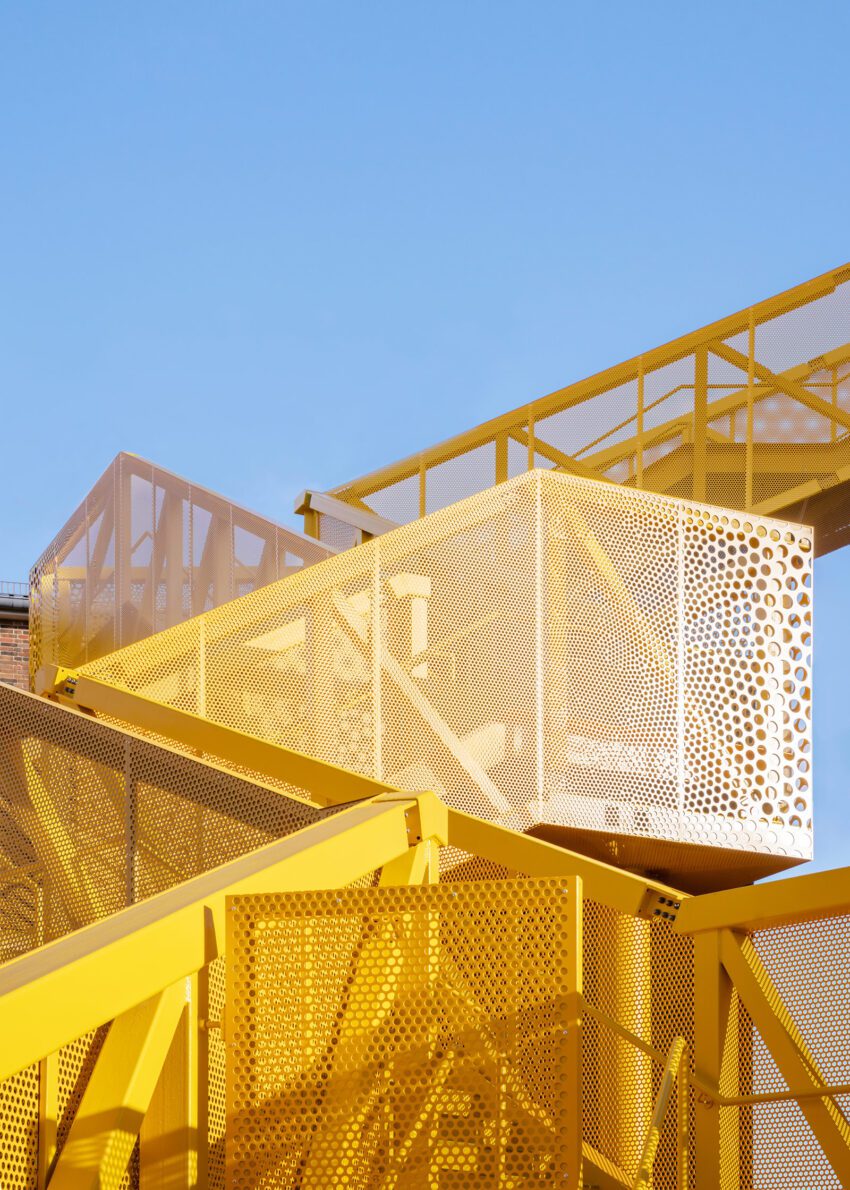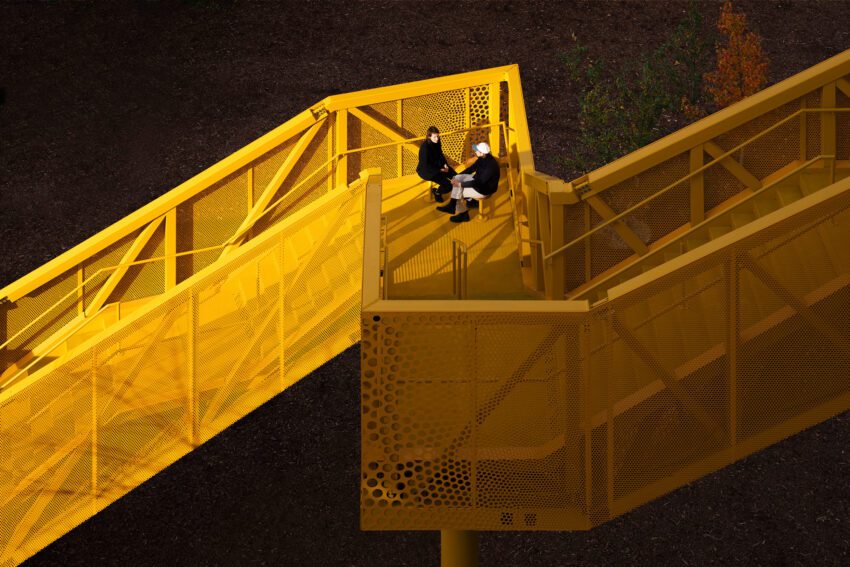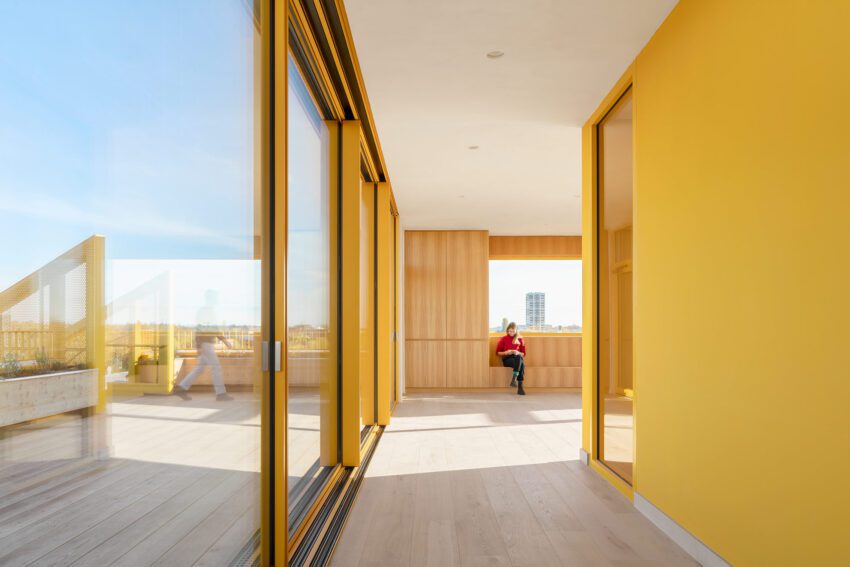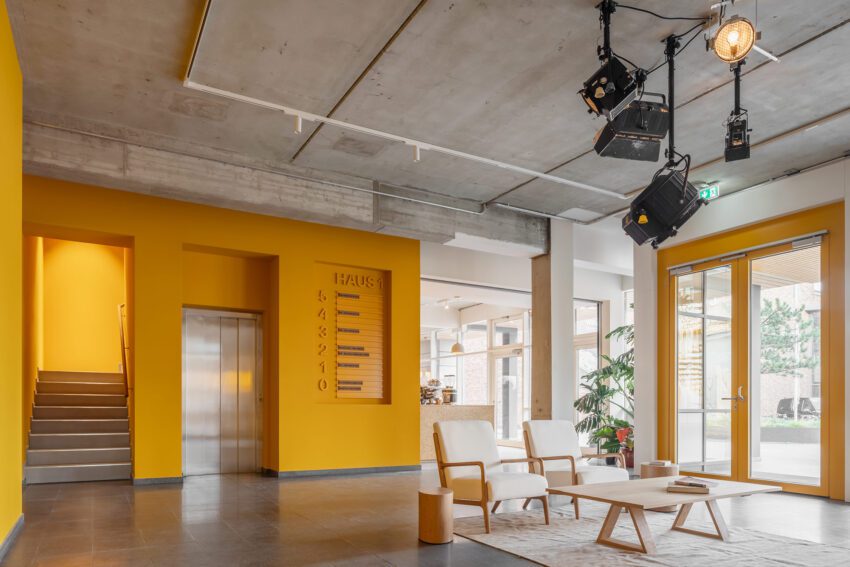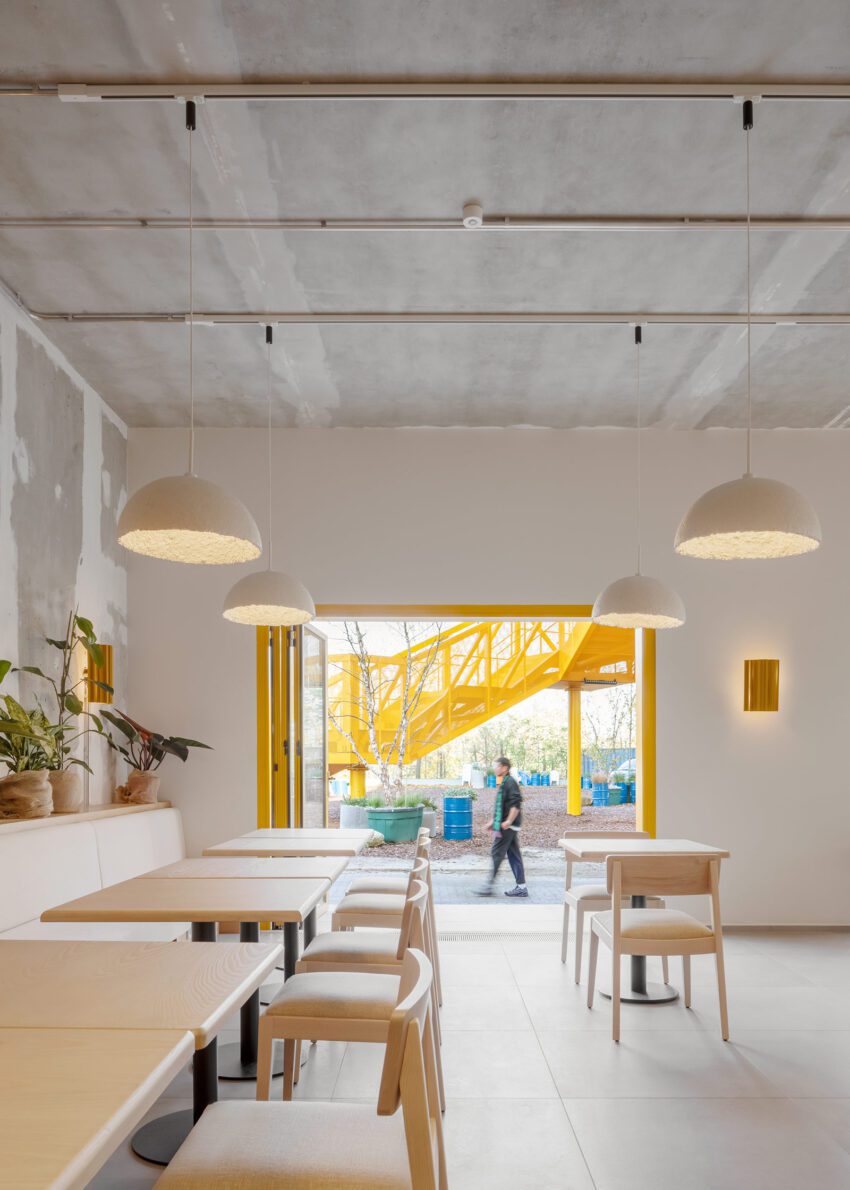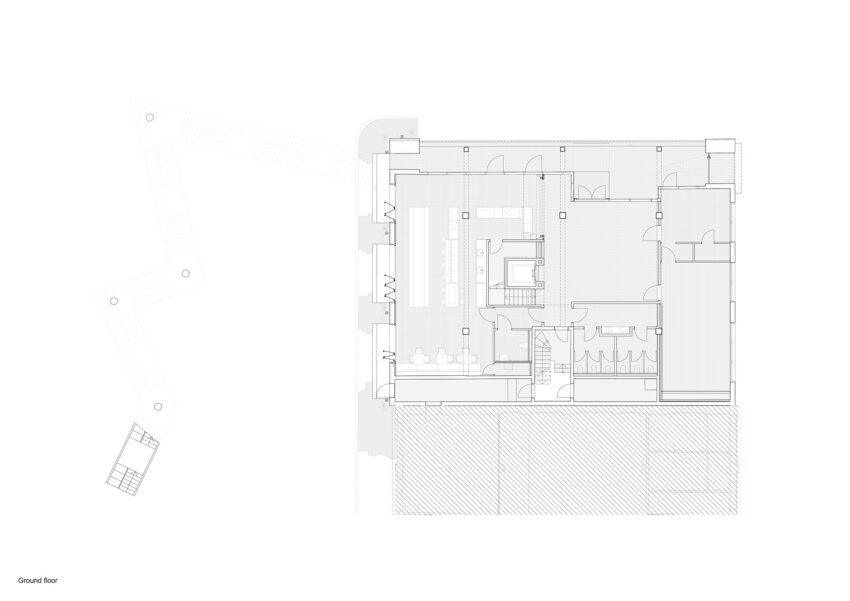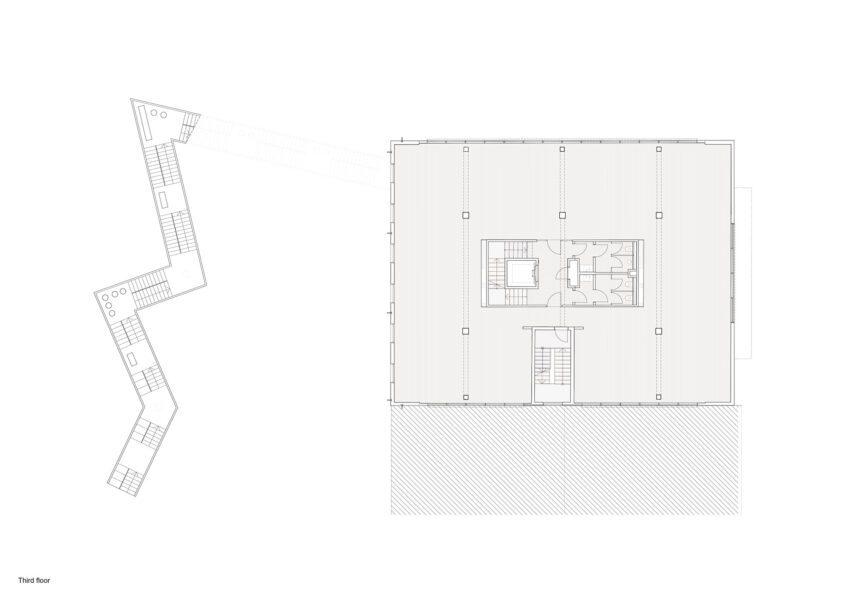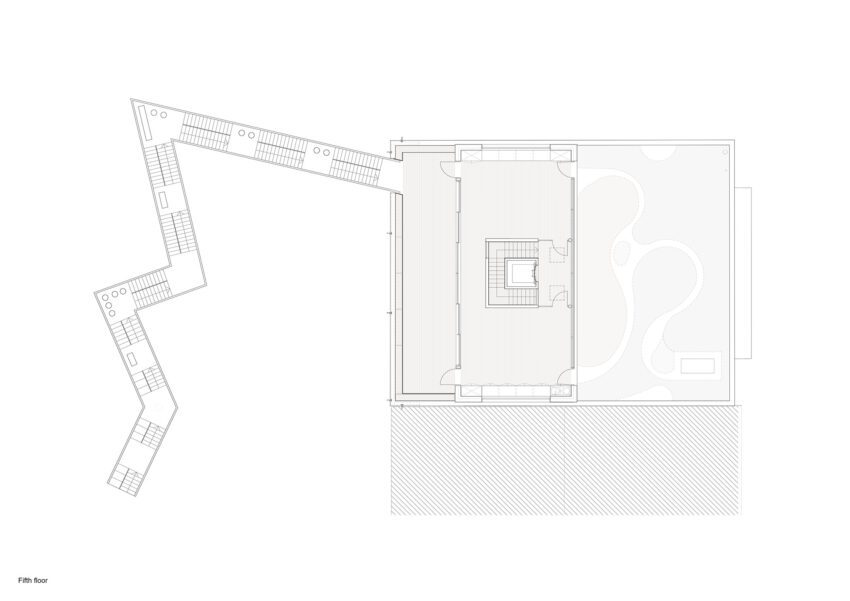In a bold move that marries architectural innovation with sustainability, MVRDV and HS-Architekten have transformed a once unremarkable office building from the 1990s into a striking landmark for Atelier Gardens in Berlin. Known as HAUS 1, this structure now stands out with its vibrant yellow hue, signaling a new era for the campus of Berliner Union Film Ateliers (BUFA), located near Tempelhof Airport.
HAUS 1 Technical Information
- Architects1-20: MVRDV + HS-Architekten
- Location: Berlin, Germany
- Topics: Yellow in Architecture
- Area: 2,575 m2
- Completion Year: 2020-2023
- Photographs: © Schnepp Renou, © Lukas Drobny
The newly transformed HAUS 1 is more than a gateway to this unique campus devoted to impact. It is a representation of the Atelier Gardens community and their commitment to chart a different vision of society – one that’s optimistic, yet radical and innovative.
– Jacob van Rijs, MVRDV founding partner
HAUS 1 Photographs
A Vision of Change and Sustainability
HAUS 1 is part of a larger master plan aimed at diversifying the BUFA campus’s user base. The focus extends beyond filmmakers to include organizations and individuals dedicated to climate activism and social justice. This transformation is not just about a physical makeover but about embedding a different vision of society – one that’s both optimistic and radically innovative.
Originally built in 1997, HAUS 1’s transformation was necessitated by its strategic location and visibility from the historic Tempelhof airfield. The building, now an iconic presence on Oberlandstraße, serves as a symbolic gateway to the Atelier Gardens community and their mission.
The building’s transformation is instantly noticeable through its bright yellow exterior. This dramatic color change serves as a visual anchor, drawing attention from afar and guiding visitors towards the campus. The zig-zagging yellow staircase leading to the rooftop is not just a functional element but a visual journey, offering sweeping views of Tempelhofer Feld and the Berlin skyline.
HAUS 1’s rooftop extension features a timber pavilion made of cross-laminated prefab modules, showcasing a commitment to bio-based materials and healthy finishes like a clay ceiling. The living roof not only adds a natural element but also plays a crucial role in rainwater collection, tying into the campus’s comprehensive water retention strategy. The building’s green landscaping, new roof insulation, sun shades, and energy-efficient LED lighting all contribute to its climate resilience and sustainability profile.
Inside, HAUS 1 houses adaptable workspaces, including the headquarters of Atelier Gardens and a café. The redesigned floor plans emphasize flexibility, allowing for easy future modifications. This adaptability, combined with the use of durable and recyclable materials, underscores the building’s sustainable approach.
HAUS 1 Plans
HAUS 1 Image Gallery

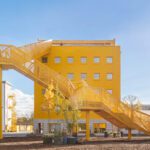

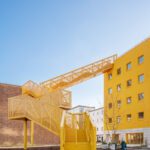
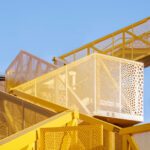
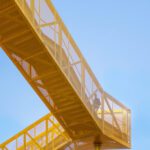
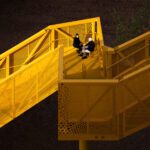
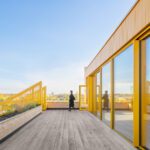
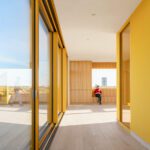

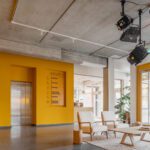
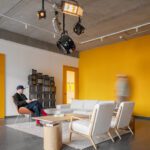
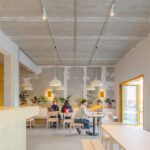
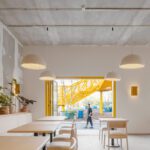
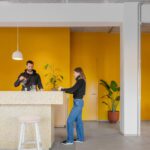



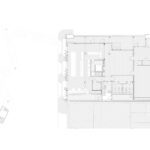
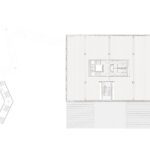
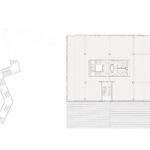
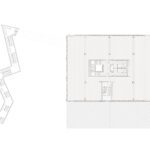
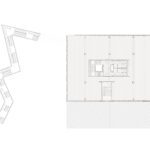


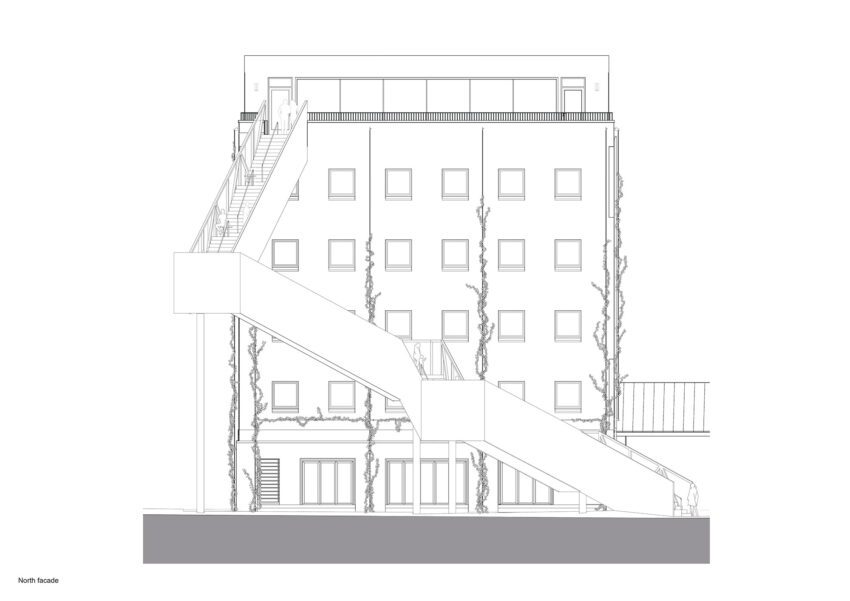
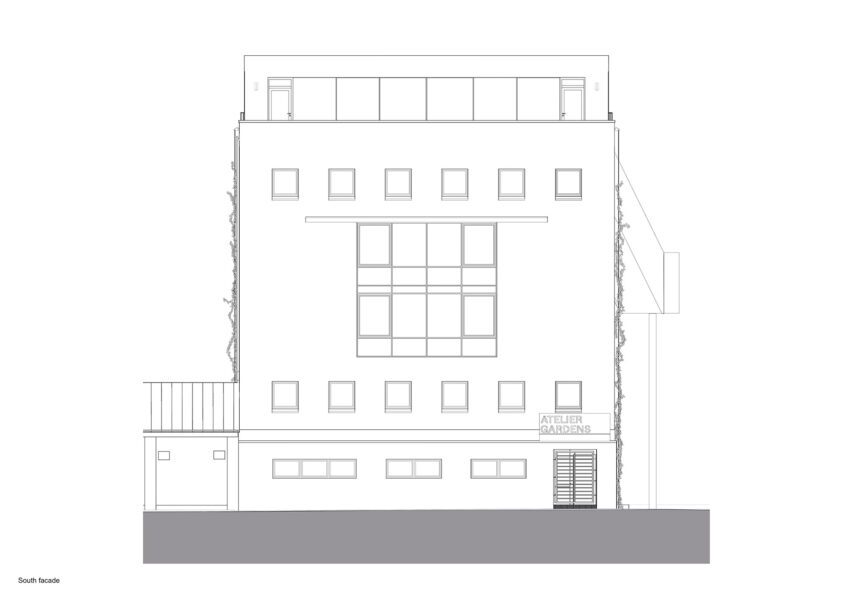
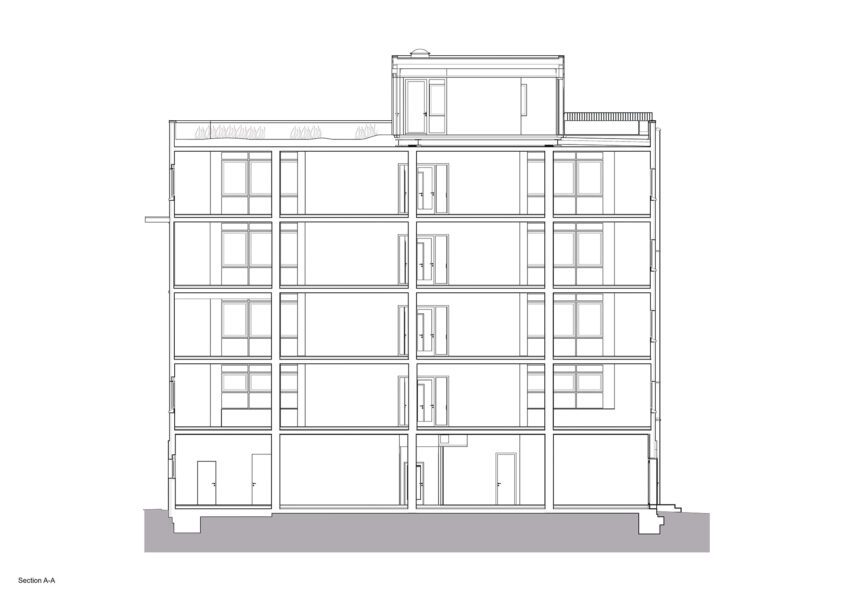
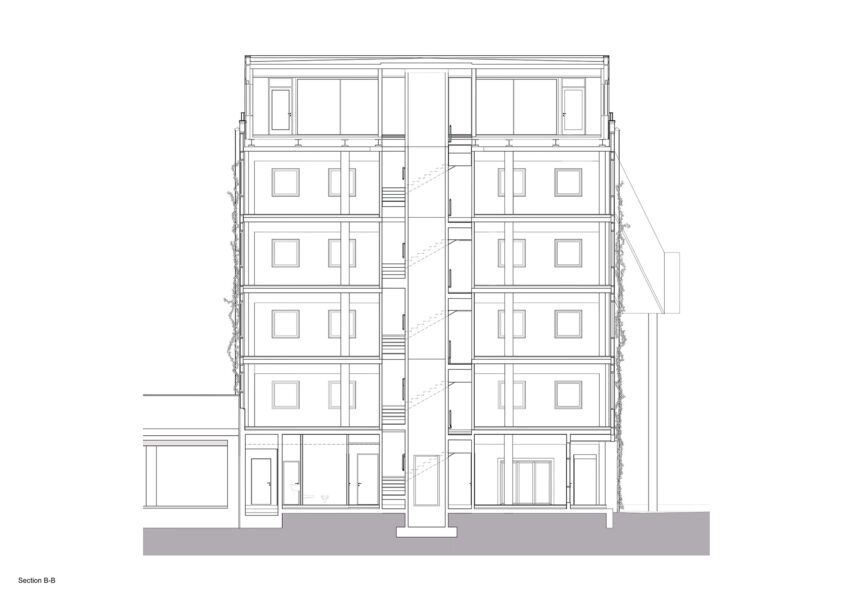
About MVRDV
MVRDV is a globally recognized Dutch architecture and urban design firm founded in 1993 by Winy Maas, Jacob van Rijs, and Nathalie de Vries. Renowned for its distinctive and innovative approach to design, MVRDV has established a reputation for creating highly unique structures that often challenge conventional architectural norms. The firm’s work is characterized by its playful, experimental nature, and a commitment to sustainability, often integrating social, cultural, and ecological elements into their projects. MVRDV’s portfolio spans a diverse range of projects, including residential buildings, commercial spaces, cultural institutions, and urban landscapes, each marked by a bold use of color, form, and spatial experimentation. Their work is not just about aesthetics; it often involves a deep engagement with the local context and community, reflecting a broader vision of architecture’s role in shaping contemporary society.
Notes & Additional Credits
- Founding Partner in charge: Jacob van Rijs
- Partner: Fokke Moerel
- Design Team: Klaas Hofman, Jonathan Schuster, Monica Di Salvo, Pim Bangert, Andre Bahremand, Simone Costa, Egle Jacinaviciute, Andrea Molinari
- Visualizations: Antonio Luca Coco, Angelo La Delfa, Jaroslaw Jeda
- Environmental Advisor: Peter Mensinga
- Copyright: MVRDV Winy Maas, Jacob van Rijs, Nathalie de Vries
- Client: Fabrix
- Co-architect: HS-Architekten (Markus Hirschmüller, Harald Schindele, Andreas Credo, Leonie Lorenz, Miguel Lopez, Maximilian August, Larissa Preuss, Benedict Tulinius, Goran Petrovic, Lydia Kotzan, Ioanna Nicolaou, Claudia Große-Hartlage)
- Landscape Design: Harris Bugg Studio
- Project Coordination: Drees & Sommer
- Fire protection: Brandschutz Plus+ Eberl-Pacan Brandschutzplaner
- Structural + Facade engineering: Drees & Sommer SE
- M & E / Planning: Buro Happold
- Building physics: Ingenieurbüro Axel C. Rahn
- Waste water: HATI Gesellschaft für Handwerk Technik und Innovation Ground
- Surveyor: MKP
- General contractor: KPM3
- Lighting advisor: Deltalight
- Metal construction: Metallbau Weinmann
- Carpentry and Roofing: Zimmerei & Dachdeckerei Quappe

